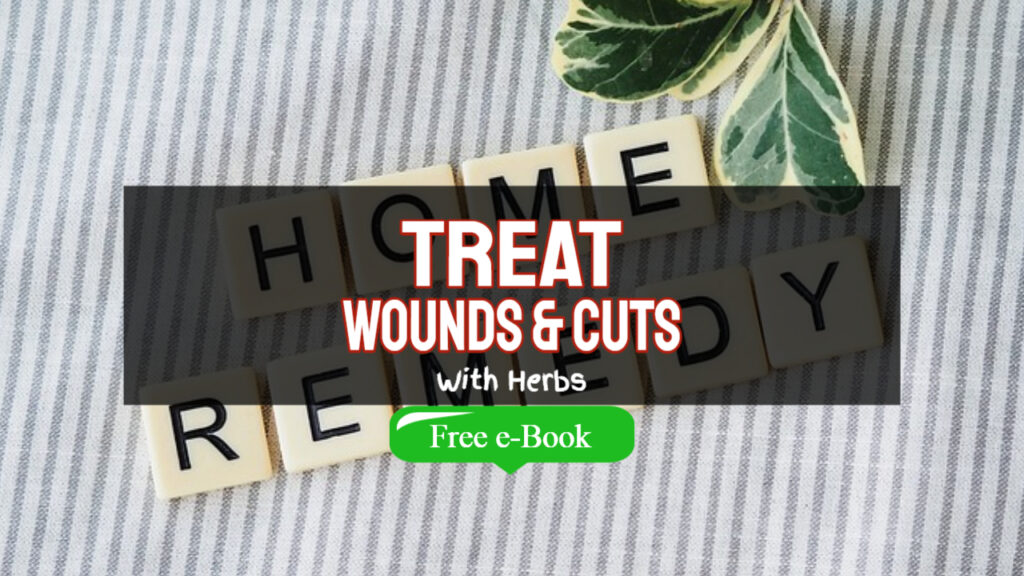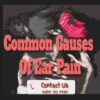How to Use Herbs to Treat Wounds and Cuts
Most people rely on traditional ways to treat cuts and wounds, such as medicine, bandages, and antibiotics. Herbs, on the other hand, can be used to treat these injuries. Some herbs, in fact, are more effective than conventional medicines.
Here are some of the most effective herbs for wound healing:
Calendula
This plant is a powerful antibacterial that aids in the prevention of wound infection. It also aids in the healing of wounds (1) and lowers inflammation. Calendula oil (derived from the marigold flower) is one of the greatest oils for mending wounds, easing dermatitis, and alleviating diaper rash. Calendula balm is particularly useful in treating skin diseases such as psoriasis, eczema, and acne. Simply apply to a clean face. Calendula has also been shown to protect the skin from the sun. Prevention is usually better than cure, so put on lots of sunscreen before going out for some sunbathing (2).
Chamomile
This plant has anti-inflammatory and calming properties. This makes it perfect for treating painful or inflammatory wounds. It is also antiseptic, which means it destroys germs and bacteria. It has even been demonstrated to be as effective as steroid cream in treating skin ulcers. It works quicker in certain circumstances (3). Chamomile oil performs much better when coupled with lavender oil than it does on its own (4).
If left untreated, eczema can lead to open sores. These can be excruciatingly painful. Chamomile oil not only hydrates dry skin, but it also decreases inflammation and cures it well (5).
Lavender
This plant not only has a pleasant aroma but also possesses anti-inflammatory and antibacterial characteristics that aid in the healing process. It is also said to minimize scarring, which is something to think about if the cut is on your face (6).
Lavender oil is the finest essential oil to keep on hand if you are prone to pest bites and stings. The anti-inflammatory and pain-relieving qualities of lavender oil can give relief from itching and discomfort. It is frequently present in mosquito repellent sprays, so use it to avoid being bitten and injured in the first place (7). Lavender is thus an excellent natural addition to your vacation first aid pack.
Lavender oil has also been shown to help soothe and mend wounds after delivery. Because these cuts are very sensitive, our herbal therapy is mild on this sensitive area (8). Another mild herbal therapy for injuries on this portion of the female anatomy is aloe vera gel.
Echinacea
This plant is a potent immune booster that aids in the battle against infection in wounds. It has been used for hundreds of years and works effectively on wounds and burns. Herbal therapies are not generally regarded in modern times due to the extensive usage of antibiotics. However, according to one expert, echinacea is the greatest substance to keep in your first aid bag (9). The best part is that, unlike antibiotics, it does not cause bacterial resistance. I'm not sure about you, but I'm heading to get some.
Garlic
This plant contains antibacterial characteristics and can aid in the healing of wounds. Allicin is the active component of garlic. This molecule is excellent since it has antiviral, antibacterial, and anti-inflammatory properties. If you don't like the flavor, it's also available as a tasteless supplement.
Unfortunately, it is less effective when cooked, and as much as I enjoy garlic, I don't want to consume it raw. However, you may have it pickled or in oil, which seems to make it more appealing.
When applied to the skin, garlic has also been shown to heal wounds. Due to the powerful scent, I believe I would prefer to utilize one of the other methods suggested in this post, but if none of them are accessible, at least you now know that garlic can assist (10).
Goldenseal
This herb's root has a potent antibacterial agent that can aid in the healing of wounds. It is very beneficial in the treatment of oral ulcers, which can be excruciatingly painful (11). Goldenseal extract is turned into an oil that may be applied to cuts and wounds.
Tea tree oil
This oil is antibacterial and antifungal, making it perfect for healing infected or irritated wounds (12). Tea tree oil is also useful for repairing acne-damaged skin (13). In fact, when compared to traditional therapies, tea tree oil has been demonstrated to accelerate the healing of cuts and wounds (14). Please keep in mind that if you are pregnant, you should avoid using this potent oil. This is due to the fact that it has the potential to interfere with hormones that are crucial in the regulation of pregnancy (15).
Aloe Vera
The gel from the Aloe Vera plant is frequently used to treat cuts and wounds in balms and lotions. When you have a cut or graze, this is one of the greatest herbs to utilize. Its mild healing capabilities, as well as its anti-inflammatory and antibacterial characteristics, aid in wound healing. It is also an excellent moisturizer and can aid in the prevention of scars.
Aloe Vera gel is especially beneficial for burns and psoriasis. It is also useful for treating cracked nipples caused by breast-feeding (16). It is well worth having a few plants about the house for emergency usage. Simply break some off and apply the calming gel to the wound, cut, or burn.
Arnica
 This is another well-known plant that is frequently seen in first-aid packs. It aids in the relief of pain and inflammation caused by cuts and wounds. It is very effective in reducing swelling. However, its superpower is that if applied promptly after an accident, it significantly reduces pain and the development of bruises (17). Arnica is an excellent alternative to pharmaceutical treatments if you prefer natural goods. It has been discovered to be just as effective as anti-inflammatory medicines in treating wounds (18).
This is another well-known plant that is frequently seen in first-aid packs. It aids in the relief of pain and inflammation caused by cuts and wounds. It is very effective in reducing swelling. However, its superpower is that if applied promptly after an accident, it significantly reduces pain and the development of bruises (17). Arnica is an excellent alternative to pharmaceutical treatments if you prefer natural goods. It has been discovered to be just as effective as anti-inflammatory medicines in treating wounds (18).
Any of these plants can be used to cure cuts and wounds. You may crush them and use them as a poultice to the wound. Many are also available as creams or balms that may be gently massaged onto the skin.
Consult a health expert before using herbs to treat wounds. This is due to the fact that some plants can be dangerous, especially if consumed. Finally, whether you use herbs or not, be sure to completely clean the area and cover it with a clean bandage to prevent infection.
References
- The Impact of Aloe vera and Calendula on Perineal Healing after Episiotomy in Primiparous Women: A Randomized Clinical Trial https://pubmed.ncbi.nlm.nih.gov/25276736/
- Assessment of In-vitro Sun Protection Factor of Calendula Officinalis L. (Asteraceae) Essential Oil Formulation https://www.ncbi.nlm.nih.gov/pmc/articles/PMC3326776/
- Comparative analysis between Chamomilla Recutita and corticosteroids on wound healing. An in vitro and in vivo study https://onlinelibrary.wiley.com/doi/abs/10.1002/ptr.2612
- Two US practitioners' experience of using essential oils for wound care https://www.magonlinelibrary.com/doi/abs/10.12968/jowc.2002.11.8.26432
- Chamomile: A herbal medicine of the past with bright future https://www.ncbi.nlm.nih.gov/pmc/articles/PMC2995283/
- Wound healing potential of lavender oil by the acceleration of granulation and wound contraction through induction of TGF-β in a rat model https://www.ncbi.nlm.nih.gov/pmc/articles/PMC4880962/
- Laboratory evaluation of toxicity of 16 insect repellents in aerosol sprays to adult mosquitoes https://www.biodiversitylibrary.org/content/part/JAMCA/JAMCA_V19_N3_P271-274.pdf.
- A Study to Assess the Effectiveness of Lavender Oil Versus Povidine Iodine on Healing of Episiotomy Wound among Postnatal Mothers https://bit.ly/3FhGdVm
- Echinacea Angustifolia as a Wound Healing Agent http://doctorschar.com/echinacea-wound-healing-agent/
- Mechanism of Action of Topical Garlic on Wound Healing https://journals.lww.com/dermatologicsurgery/Abstract/2018/05000/Mechanism_of_Action_of_Topical_Garlic_on_Wound.5.aspx
- Goldenseal (Hydrastis Canadensis L.) and its active constituents: A critical review of their efficacy and toxicological issues https://pubmed.ncbi.nlm.nih.gov/32683037/
- A review of applications of tea tree oil in dermatology https://pubmed.ncbi.nlm.nih.gov/22998411/
- Complementary therapies for acne vulgaris https://www.cochranelibrary.com/cdsr/doi/10.1002/14651858.CD009436.pub2/full
- The Effect of Tea Tree Oil (Melaleuca alternifolia) on Wound Healing Using a Dressing Model https://www.liebertpub.com/doi/abs/10.1089/acm.2012.0787
- Tea Tree Oil During Pregnancy https://internationaldoulainstitute.com/2021/06/tea-tree-oil-during-pregnancy/
- The Effect of Aloe Vera Clinical Trials on Prevention and Healing of Skin Wound: A Systematic Review https://www.ncbi.nlm.nih.gov/pmc/articles/PMC6330525/
- Accelerated resolution of laser-induced bruising with topical 20% arnica: a rater-blinded randomized controlled trial https://onlinelibrary.wiley.com/doi/abs/10.1111/j.1365-2133.2010.09813.x
- Efficacy of Arnica montana D4 for healing of wounds after Hallux valgus Surgery compared to diclofenac https://pubmed.ncbi.nlm.nih.gov/18199022/
The post How To Treat Wounds And Cuts With Herbs appeared first on https://gqcentral.co.uk



